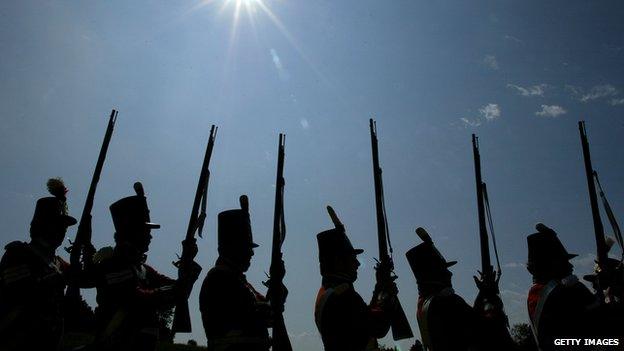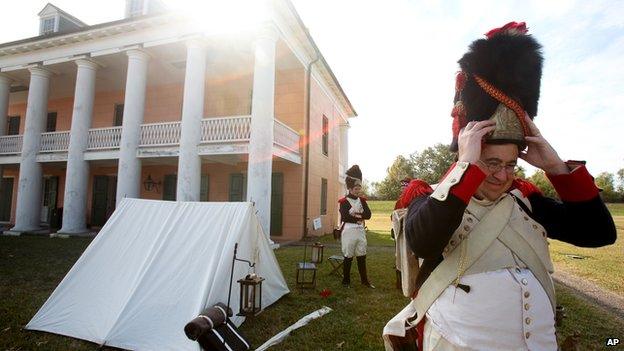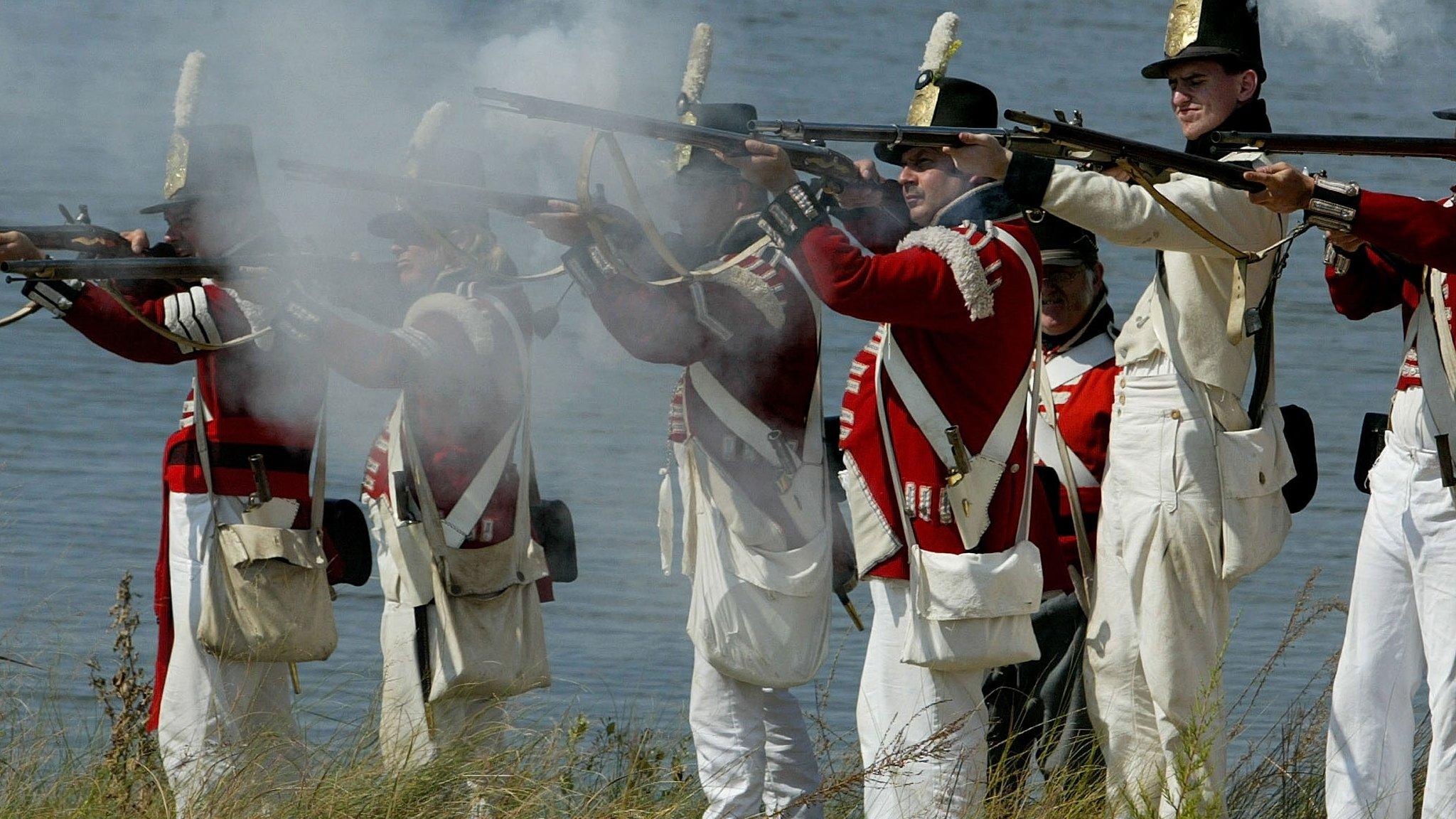Stars and strife: When Scots fought Americans
- Published

Two hundred years ago, Scottish soldiers marched against a US army in the "forgotten" Battle of New Orleans.
By the end of the conflict at Chalmette on 8 January 1815 as many as 550 of the 93rd (Sutherland) Regiment were either dead, wounded or missing.
Celebrated in the States as a key victory in its Second War of Independence against Great Britain, the battle and the wider war are little known here.


The site of the Battle of New Orleans is now a national park
It was a battle that did not need to be fought.
Britain and the US had signed a peace treaty in the Flemish city of Ghent the previous month, December 1814, but word arrived in America too late to prevent the clash near New Orleans.
America and Britain had been at war since 1812.
Press ganged
Various causes lay behind the conflict, including Britain's blockade of continental European ports as part of its war with Napoleonic France.
American merchant ships were seized and the crews press-ganged into serving with the Royal Navy.
But the war was not just about trade. America also saw it as a chance to carve itself a fat slice of the British Empire, by invading and taking control of Canada.
Known as the War of 1812 and the Second War of Independence, the conflict was the first time the US had declared war on another nation.
The battles were fought at sea and on North American soil by armies of Americans, Native Americans, slaves, pirates from brigand-held Barataria in Louisiana, British and Canadians.
In one famous incident in August 1814, British troops burned the White House in Washington DC.
In the fighting that followed, US forces repulsed invasions of New York, Baltimore and New Orleans.

Battle in popular culture

Glasgow-born musician Lonnie Donegan (pictured), best known for novelty songs like My Old Man's A Dustman, had a UK chart hit with the song Battle of New Orleans in the 1950s.
A re-enactment of the battle has been recreated using Lego and uploaded to YouTube.
From the war, a painting of the British burning the White House in 1814 plays a part in the film Olympus Has Fallen.
In the movie, the hero played by Scots actor Gerard Butler is inspired by the artwork in his one-man battle against terrorists who have invaded the presidential building.

The 93rd (Sutherland) Regiment were among the British regiments tasked with taking New Orleans.
The city was defended at Chalmette by a well-dug-in force led by General Andrew Jackson, a future American president.
Many of the men of the 93rd had been recruited from straths in Sutherland on a promise that their families would not be evicted in a Highland clearance.
At the time, communities on the Sutherland Estate were being cleared to make way for large-scale sheep production.
Tactical errors
On the morning of 8 January, the 93rd, along with other British regiments, advanced on the American line.
The US defences - which included flooding a dried-up canal - their cannons and tactical errors by the British led to the invaders' defeat.
General Sir Edward Pakenham, who had overall command of the British troops, was killed.
There were 2,000 British casualties, with the 93rd among the units suffering some of the heaviest losses.
During the fighting, tactics had left the Scots standing in a line exposed to cannon, musket and rifle fire.
British and American combatants would later write of the 93rd's bravery.
The US lost 71 men in the battle.

The battle is still commemorated in the US today
This week, hundreds of events including re-enactments and history workshops will be held at Chalmette, now a national park, to mark the bicentennial anniversary of the American victory.
"Not forgotten about in America, the war and the Battle of New Orleans are not well-known here," said Jim Hunter, Emeritus Professor of History at the University of the Highlands and Islands.
"For Americans, the battle and the wider war is important because it was won on their own. In the earlier War of Independence they had support from France."
"From a British point of view the War of 1812 was a fiasco."

US plan for war with Britain in 1930s
More than 100 years after the end of the War of 1812, America had a secret plan for a new war against Britain.
Produced in 1930 and called Joint Plan Red, the document set out strategies for invading Canada.
Some US states relied on freshwater sources in neighbouring Quebec and an invasion would have given America a chance to secure those supplies - and also deny Canadian ports to the British.
A key war aim was to eliminate Britain as a trading competitor.
Joint Plan Red, now held in a public archive, was shelved in 1939.

Prof Hunter researched the Battle of New Orleans for his forthcoming new book, Set Adrift Upon The World: The Sutherland Clearances 1813-1821.
In the book, the historian relates a story of a wounded Sutherland Highlander.
The soldier was a renowned brawler with a fearsome right-hook. Because of his injuries, the Highlander lost his right arm to a surgeon's saw.
Another wounded Highlander lying on a nearby bed teased him about the loss.
Prof Hunter said: "Taking hold of his newly sheared-off limb. still within reach of his remaining hand, he swung it towards his tormentor - telling him, or so the story went, that he should think himself honoured to be the last man to feel the weight of what had been a powerful fist."
For some members of the 93rd, the misery continued on their eventual return to Scotland.
They found that their homes had been cleared while they had been fighting for their lives on the battlefield.
- Published18 June 2012
